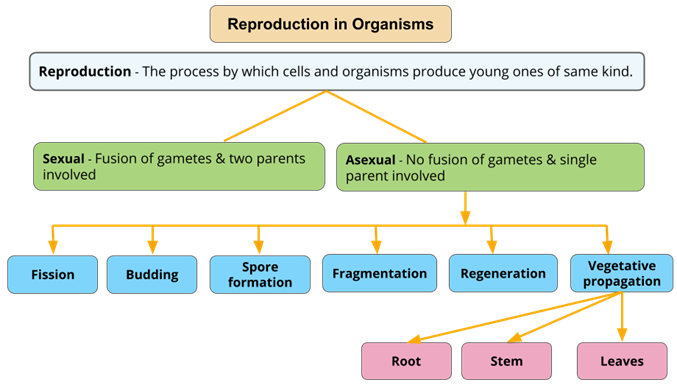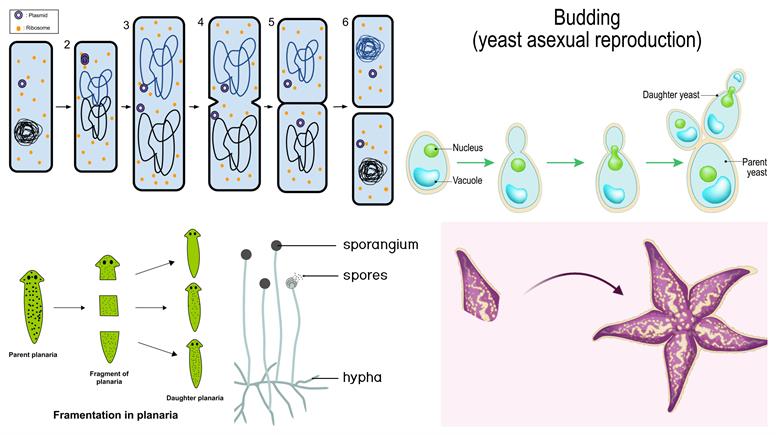PDF chapter test TRY NOW
What happens if a piece of bread is stored at room temperature for 4 to 5 days? What are your observations?
On the bread, we see green or black hairy growths. On leaving it undisturbed for a couple of days, the bread has green or black patches. What exactly are these?

Growth of mould on bread
These are moulds. Moulds thrive on the surface of bread because it provides both nutrition and moisture. Why was there a hairy appearance at first, which then turned into patches over time? This is due to the fact that moulds reproduce. The moulds multiplied in number as a result of reproduction.
What is reproduction?
Reproduction is the biological process through which organisms produce offspring that are genetically identical to themselves.
It is one of the most important aspects of living things to produce their own kind. In the living world, reproduction is observed in different forms.
Purpose of reproduction:
1. Reproduction is essential for the maintenance and continuity of a species.
2. It is a process that maintains the population of young, adult and aged persons.
3. The process of reproduction introduces variations in the organisms. These variations are essential for adaptations and evolution.
4. The existence of life on earth is due to the process of reproduction. The inability of a species of an organism to reproduce results in the species extinction.
Types of Reproduction:
Based on the structural complexity, physiology and habitat of the organisms, reproduction is divided into two types:
1. Asexual reproduction
2. Sexual reproduction

Types of reproduction
Asexual reproduction:
In asexual reproduction, offspring are produced by a single parent (uniparental), and there is no fusion of gametes. Thus, the offspring produced are exact copies of the parent. The asexual mode of reproduction is confined only to the lower organisms and plants. The process of asexual reproduction occurs through:
a. Binary fission
b. Fragmentation
c. Budding
d. Spore formation
e. Regeneration

Types of asexual reproduction: Clockwise from top left: Binary fission, Budding, Regeneration, Spore formation, and Fragmentation
Sexual reproduction:
In human beings, the process is sexual reproduction, which involves both male and female sexes. The new individual develops from the fusion cell called a zygote. Human reproduction involves separate and complex male and female reproductive systems. In this chapter, we will study human reproduction in detail.
Reference:
https://upload.wikimedia.org/wikipedia/commons/4/49/Binary_Fission.png
https://commons.wikimedia.org/wiki/File:Disk-Independent_Bidirectional_Regeneration.png
https://www.flickr.com/photos/lynnfriedman/34296658593/in/photostream/
